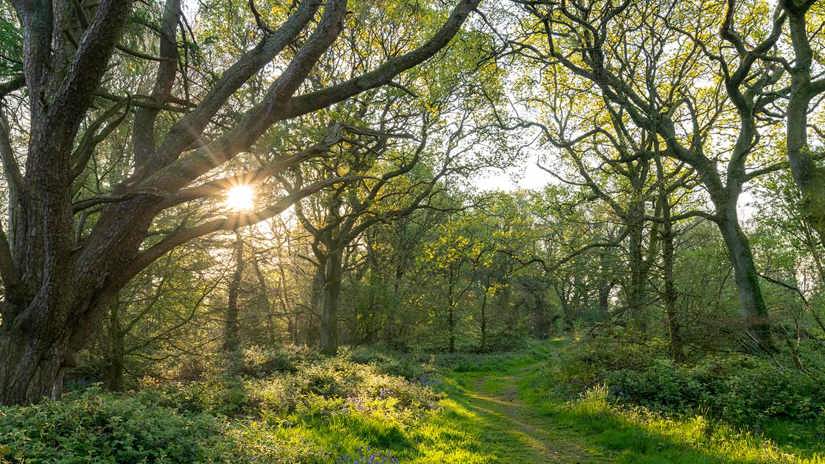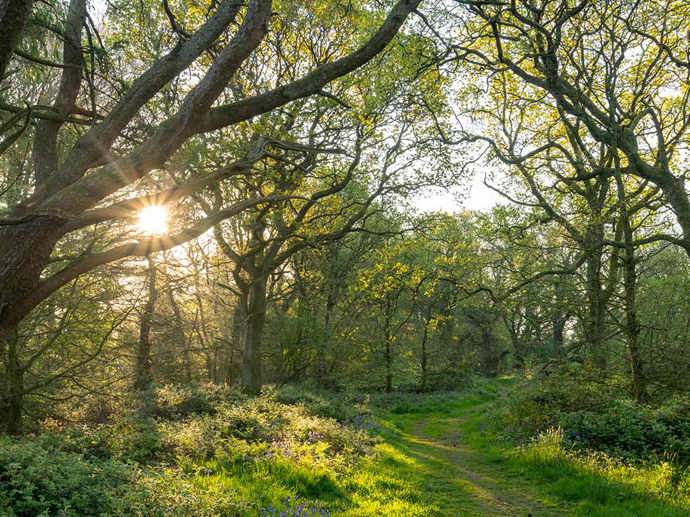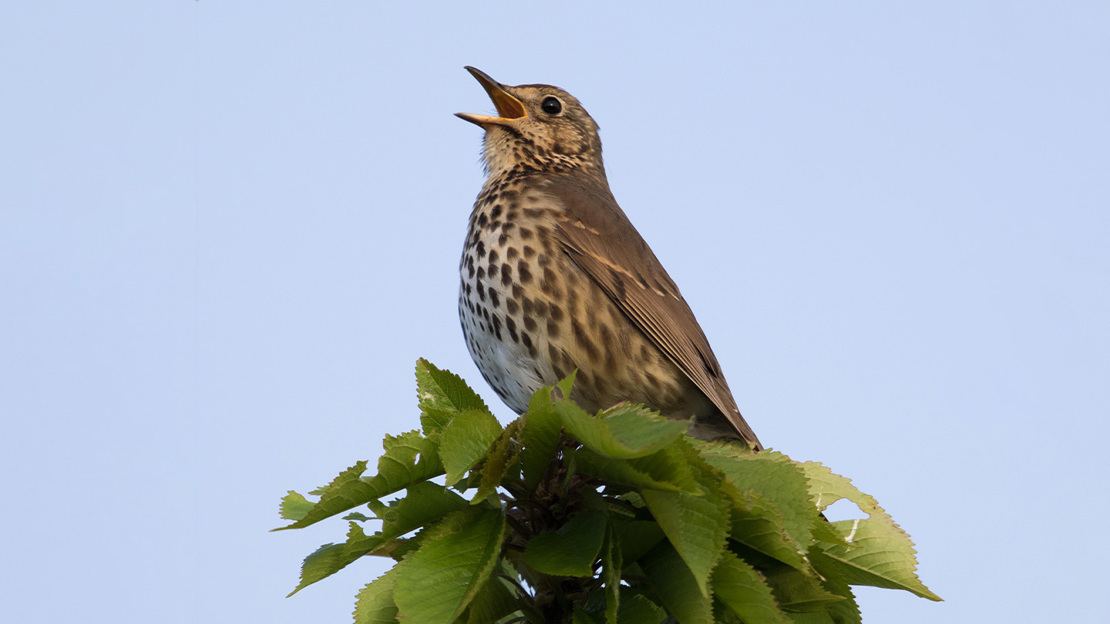

Go exploring
Primordial landscapes, tangled branches, breathtaking wildlife and miles of woodland trails. From the countryside to cities, we care for thousands of woods throughout the UK, all free to visit.

Content editor
The dawn chorus is one of the best-known, most recognisable and earliest signs of spring. But what’s it all about?
Simply put, the dawn chorus is the collective twitterings, tweetings and chirps of wild birds. The sound is unmistakable. It starts with a few songs – listen for robins, blackbirds and thrushes – just before dawn. They’re soon joined by other voices until all the birds in the area are singing together.
The dawn chorus is all about defending territory and raising chicks. The singing you can hear in the morning is typically carried out by male birds. Making so much noise uses up a lot of energy, especially on an empty stomach and after a chilly night, so only the strongest, best-fed males will produce the loudest songs. In doing they demonstrate to females that they are fit, healthy and hold a territory with plenty of food. A loud song also serves as a deterrent for any rival males who may be looking to move in.

Listen out very early in the morning from March to July, with the peak occurring in May and June. The first singers pipe up about an hour before sunrise, so you’ll need to be an early bird – especially if you want to catch the first few songs or identify individual birds.
But you don’t have to get up before it’s light. The chorus is at its best around 30 minutes either side of sunrise, but the songs carry on well into the morning, meaning there’s plenty of time to listen – perfect if you want a few extra minutes in bed!
Early mornings are too dark to search for food, and too dark to be spotted by predators. That makes it the perfect time to sing. As there is less background noise and the air is so still, sound carries around 20 times further than it would later in the day.

Birds start singing at different times, and just like an orchestra, there’s a set sequence. Robins, blackbirds and thrushes are first. The pre-dawn singers are joined by woodpigeons, wrens and warblers, while great tits, blue tits, sparrows and finches only add their voices when it’s light enough for them to see.
Almost anywhere, although the countryside, nature reserves or green spaces like woods and parks are best. But you don’t have to go too far from home. If there are trees on your street or you’ve got shrubs and bushes in your garden, head outside and listen. Or just throw open your windows before it gets light. One thing’s for sure: it’s definitely worth waking up early for!


Primordial landscapes, tangled branches, breathtaking wildlife and miles of woodland trails. From the countryside to cities, we care for thousands of woods throughout the UK, all free to visit.
Keep exploring